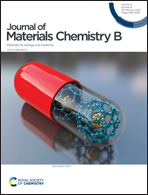Controllable synthesis of flower-like hierarchical porous TiO2 at room temperature and its affinity application†
Abstract
Flower-like particles have attracted much attention due to their efficient surface accessible sites and unique hierarchical porous structure. However, their synthesis is usually challenging and requires complex procedures. Herein, we present a simple method for rapid preparation of flower-like hierarchical porous TiO2 (FHP-TiO2) at room temperature for the first time. This method can accurately control the size of FHP-TiO2 from 150 nm to 400 nm by combining co-assembly and Stober reaction. The formation mechanism and influencing factors of FHP-TiO2 were systematically investigated, and its excellent metal oxide affinity was confirmed by theoretical calculations. Due to its hierarchical porous structure, large surface area and high specificity performance, FHP-TiO2 served as an appealing restricted-access adsorbent for specific and efficient enrichment of molecules with phosphate groups in a complex sample matrix, thereby realizing the quantitative analysis of these important biomolecules by coupling with high performance liquid chromatography-tandem mass spectrometry (HPLC-MS/MS). Moreover, compared with other morphologies (rough surface, and hollow dendritic and mesoporous structure) of TiO2 and flower-like SiO2, FHP-TiO2 showed the best affinity binding ability. This research not only presents a novel approach for tunable room-temperature synthesis of FHP-TiO2 with different sizes, but also expands the application of FHP-TiO2 as an appealing sample-enricher for food safety monitoring and early disease diagnosis.



 Please wait while we load your content...
Please wait while we load your content...